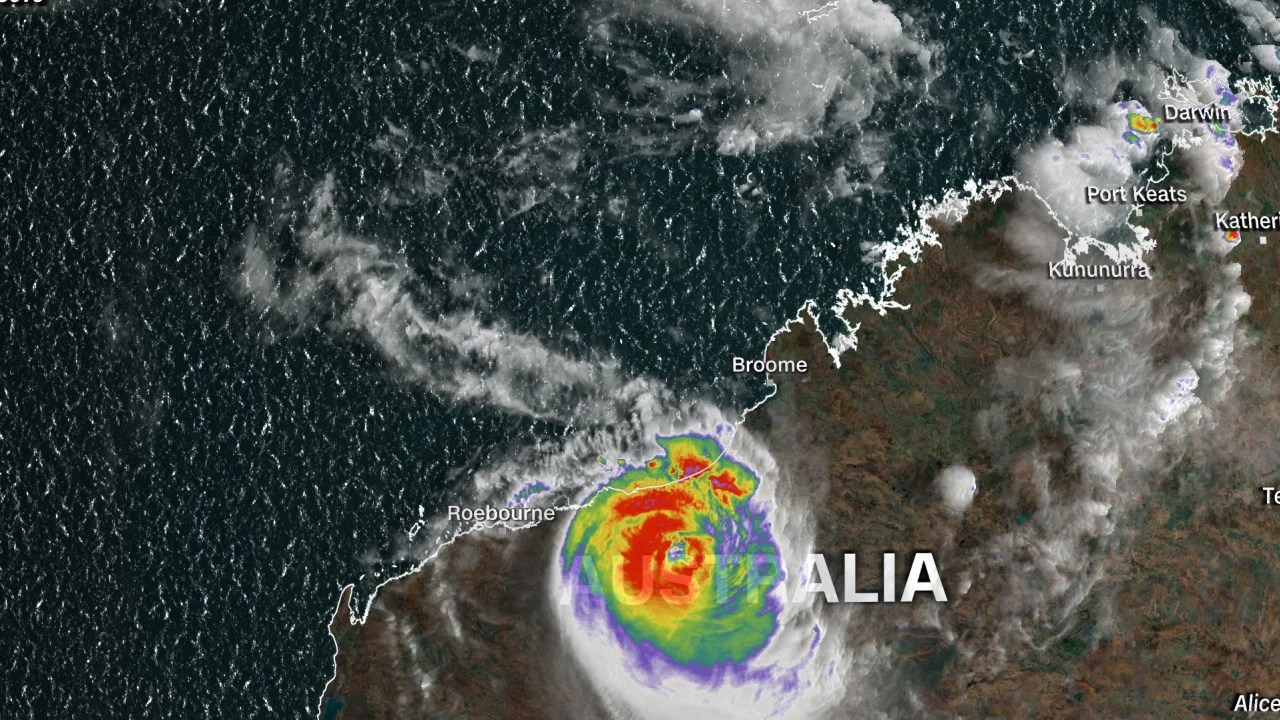(CNN) — Cyclone Ilsa, which hit a remote part of the Western Australian coast at midnight local time on Thursday, broke the previous record set in the same location 10 years ago.
After developing along the coast for several days, Ilsa made landfall between Storm De Gray and Purdue Roadhouse as a Category 5 storm, according to the Australian Bureau of Meteorology (BOM), equivalent to a US hurricane.
After that, the cyclone weakened and moved southeast across the state, bringing heavy rain and winds of up to 120 kilometers per hour.
Shortly before landfall, Hurricane Ilsa accelerated over Bedout Island, a small uninhabited island, where sustained winds reached 218 km/h in 10 minutes.
“The previous record was set by Hurricane George at 120 mph in the same location in 2007!” BOM tweeted. Overnight, winds gusted to 288 km/h on the island, a breeding ground for seabirds.
It is not yet clear what damage the cyclone caused in Western Australia, although the winds are capable of causing significant damage to trees, buildings, power lines and other infrastructure.
Flood warnings are in place for a large part of Western Australia until April 14, 2023, and there are fears that floodwaters will cut off access to remote roads. (Credit: WA Department of Fire and Emergency Services)
Officials planned to conduct an aerial damage survey when it was safe enough for helicopters to fly over the area.
On Friday, Superintendent Peter Sutton of Western Australia’s Department of Fire and Emergency Services said the cyclone appeared to have passed through major population centres, including the town of Port Hedland, a mining town of about 16,000 people.
“There will certainly be damage in the coastal areas where the drift occurred, but mostly the populated areas were spared the damage when they crossed the coast,” Sutton said.
Port Hedland Mayor Peter Carter told the Australian Broadcasting Corporation (ABC) the wind was as strong as a freight train. “I think the city is very lucky … the city is still here,” he told CNN affiliate Seven News.
Port Hedland is the world’s largest bulk export port, where large volumes of iron ore are loaded and shipped to countries including China, Japan and South Korea. The Pilbara Ports Authority said the port reopened on Friday after a safety inspection to check for any damage to infrastructure.
Pityadanga, the state’s largest tribal community of 850 people, was also relatively unscathed, according to initial reports.
Reports of “extensive damage” emerged early Friday morning at the Purdue Roadhouse, a popular destination for road trippers along the coast. One of its owners, Will Bath, told the ABC he had experienced “four hours of hell” and eventually took shelter in a shipping container after Hurricane Ilsa tore off the roof.
Australian emergency services workers assess the extent of damage caused by Cyclone Ilsa, which made landfall in remote parts of the country on April 14, 2023. (Credit: WA Department of Fire and Emergency Services)
Officials warned residents to tie up anything that could blow away in high winds: caravans, trampolines, trailers and loose items.
“Winds of this force are extremely dangerous. Not only can they damage trees, power lines, roofs and houses, but they can also lift large loose objects from your yard, boats, trailers or caravans into the air,” warned BOM Principal Meteorologist Miriam Bradbury.
Coastal areas were placed on a red alert as the storm approached Thursday, meaning people should stay inside buildings away from windows and doors.
Evacuation centers have been opened for people brought in from remote communities at risk of being battered by winds and cut off by debris and floods.
Cyclone Ilsa is expected to bring 200 to 300 millimeters of heavy rain in the region, according to the BOM, with large parts of the state under flood watch.
“River flooding could significantly impact roads and access routes, with many roads potentially muddy or inaccessible in the coming days,” Bradbury said Thursday.
The strongest storm to hit any part of Australia was Cyclone Monica in 2006, which brought winds of 290 km/h across the eastern and northern parts of Australia.
The cyclone passed through densely populated areas but felled trees and caused extensive damage to vegetation with storm surges up to six meters high.





